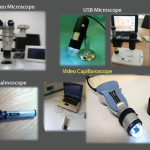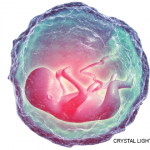A 32-year-old female patient comes in for an initial visit. She is self-referred and complains of pain, numbness and color changes in her fingers when exposed to cold. The patient reports that her right distal index finger, left distal index finger and fourth right finger turn white and blue with pain and numbness when exposed to cold temperatures. These symptoms have occurred for the past year, but have increased in frequency during the past two months. She reports that her fingers return to normal color with pain and numbness resolving after rewarming her hands. She states a sore has developed on her left distal index finger. Her finger sometimes feels stiff when cold, but denies any other musculoskeletal pain or stiffness or any joint swelling. She also denies fatigue, weight loss, recurrent fevers, rashes, chest pain, dyspnea, cough, palpitations, hypertension, unusual bruising, menorrhagia, dysuria or frequency, abdominal pain, vomiting, diarrhea, constipation, dysphagia, hematochezia, headaches, memory difficulties, insomnia, depression and weakness. She has no known allergies.
Past medical history: She has a history of type II diabetes mellitus, controlled with diet and oral hypoglycemic agents. No other comorbidities.
Family medical history: Significant for rheumatoid arthritis in her maternal grandmother and type II diabetes mellitus in her paternal grandfather and brother. No family history of Raynaud’s phenomenon, lupus, cancer, IBD, psoriasis, renal disease or blood disorders.
Social history: Single, lives alone. She works full time as a marketing director. She denies smoking and drinks alcohol only on social occasions one to two times per year.
On examination, the patient is alert and oriented. Her weight is 140 lbs., height 5 feet and 7 inches, BMI of 21.9 with a temperature of 98ºF. The HEENT exam is normal. There is no lymphadenopathy. Her lungs are clear. Her heart RRR has no murmurs or friction rubs with good peripheral pulses. The abdomen is soft and nontender with no masses or HSM. There is no CVA tenderness on percussion and no skin rashes. Mild cyanosis in the distal digits of the right index and fourth fingers and the left index finger is demonstrated. There is a shallow ulcer on the distal fingertip of the left index finger.
Musculoskeletal exam: Gait is normal. She has good muscle strength in the upper and lower extremities, both proximally and distally. All joints are unremarkable with FROM and there is no evidence of synovitis.
Diagnosis: Raynaud’s phenomenon
Plan: Counsel patient regarding etiology, pathophysiology, symptoms and prognosis for Raynaud’s phenomenon. Review measures to minimize Raynaud’s phenomenon and provide patient with written information on Raynaud’s phenomenon. Order laboratory studies to evaluate for lupus or other autoimmune connective tissue disease. Patient will start on nifedipine extended release. Review the actions and side effects of nifedipine with the patient. The patient is scheduled to return for a follow-up evaluation in six weeks.


